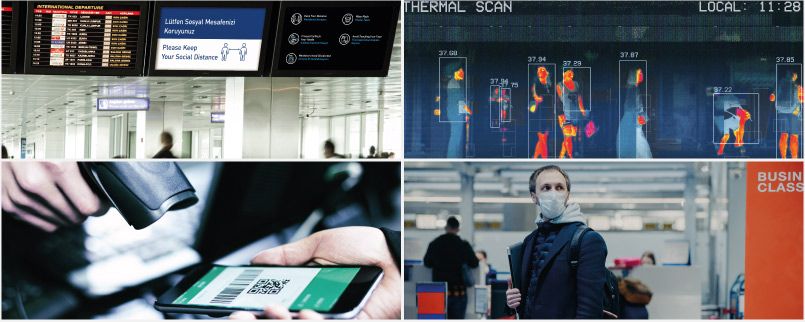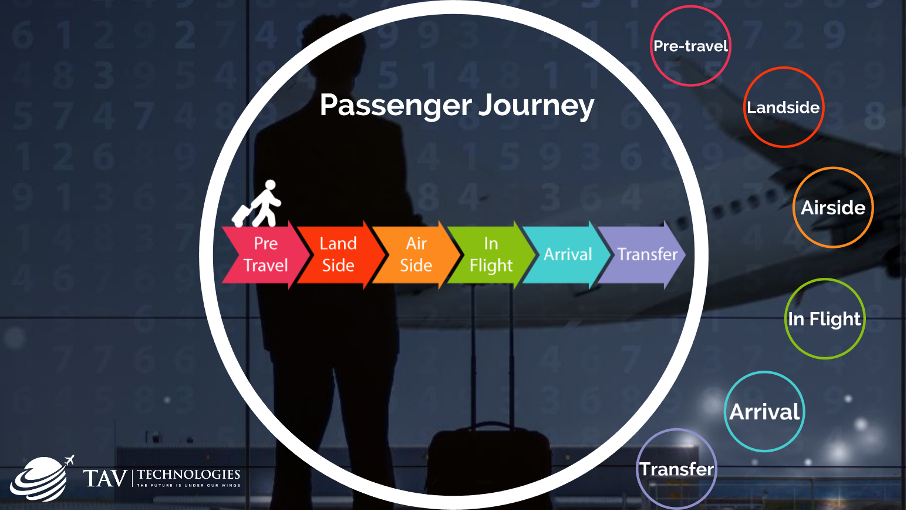
Nov 2020
The ongoing COVID-19 pandemic has resulted in restrictions and suspension of flights globally. There are a lot of health and safety concerns and new approaches are needed to cope with the current situation that will reduce the health and economic implications. We are facing concerns for the organizational processes and procedures in particularly in the airports.
The rapid drop in demand for flights leads to decline in revenues and allows airport management to introduce new operating strategies that reduces short-term costs. Measures vary from flexible staff deployment and process overhaul to variable airport infrastructure usage that results in major deviations from regular operations. Airports need to ensure the safety of passengers as well as their staff and to plan for the eventual increase in flight operations. Social distancing, initiatives to protect staff, and additional procedures will have a significant effect on customer traffic, network capacity, transfer times, and length of travel.
Aviation is facing a dynamic situation and has to be prepared, regulated, and handled in combination of rising demand and changing rules. New processes have to be introduced in almost every part of the system while meeting high economic performance requirements. For airport management, the task is to plan and organize a smooth recovery of operations while minimizing the risks of disruptive operations. At the same time making quick decisions to ensure continuous adaptation. Airports, airlines, associations, organizations, and many other stake holders are discussing and elaborating concrete measures.

TAV Technologies evaluated the entire passenger journey with Design Thinking philosophy starting from travelers’ home to the aircraft gate with all airport stakeholders and industry partners such as ACI to boost passengers’ confidence so that they can travel in the airports safely. The following key points emerged and are expected to be the new normal for the airports:
- Information Dissemination: It is critical to provide all essential information to the passengers timely during their journey in the airport to establish the trusted relationship as in pre-COVID-19 times. Information sharing starts at home with web and mobile applications, continues with information displays in the airport entrance and within the airports, all the way to the gate. Airports need to revise and utilize all of the channels to reach the passengers, inform them about the measures and real-time situation in the airports.
- Thermal Scanning & Health Control: Scanning of the passengers at several points during the passenger journey will be essential. Many of the airports in the world are planning to scan the passengers at 3 points: airport entry, passport control, and gate. Also, several airports introduce the Covid-19 test procedure at arrival.
- Sanitization: Keeping the airport premises clean and healthy is much more important during Covid-19. Airports are installing digital sanitizer dispensers equipped with IoT devices, which can be monitored remotely. Also, sensors are installed in key areas such as toilets and trash bins to measure level sanitization.
- Social Distancing: Airports are essentially places where queues and crowds are formed which increases the risk of infection. Therefore it is critical to ensure the social distancing norms within the airports. Passenger Flow Management systems enable to track the crowds in the airport and notify the operational staff if the social distancing norms are violated. The systems can also identify cases when the passengers do not wear a mask and send a notification to the operational staff.
- Contactless: Passenger journey includes many points with potential contact points such as check-in, security, and boarding where physical contact is a part of the main process. All of the processes need to be evaluated from scratch to ensure that the entire journey is contactless. Self-Service systems are now much more critical to minimize the interaction with user agents. Document exchanges can be avoided by using contactless technologies such as remote document scanning or biometrics.
TAV Technologies is working closely with airports and collaborating with Groupe ADP, to come up with alternative and effective solutions in all of the areas indicated to ensure a safe journey for passengers and a healthy working place for the staff in the airport environment. As TAV Technologies, we help airports to get ready face the post-COVID era, and exceed common international standards.
